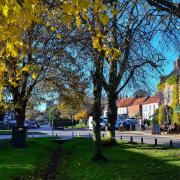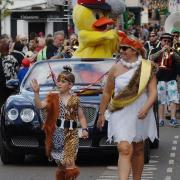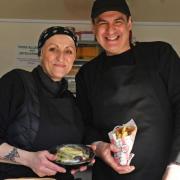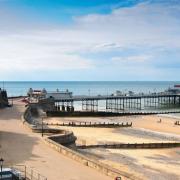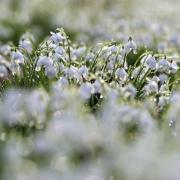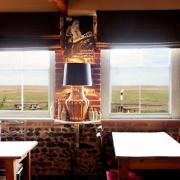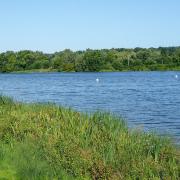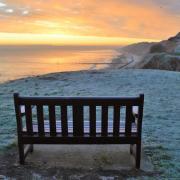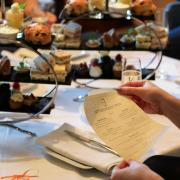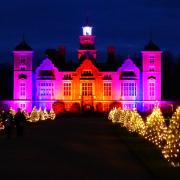Besieged castles, family quarrels, social climbing and huge estates held together by a matriarch while the men were away are just part of the story of the Pastons, who are being celebrated across Norfolk, and much further afield, 600 years after the first of the famous Paston letters

Gossipy, passionate, packed with information, celebratory and chiding, letters sent between a Norfolk family helped write the history of our country. The Paston Letters are a vital resource for historians and the very earliest dates back to 1418.
Next year Norfolk will be at the centre of an international celebration of all things Paston – from the villages they lived in to the castles they owned and from the paintings they inspired to the tombs where they are buried.
Paston Footprints 600 is a three-year community research project, based around 10 Paston-linked places in Norfolk, including:
Bacton – where the Paston estate included now-ruined Bromholm Priory.

Blofield – where the Pastons had land and property
Dereham – where Sir John Fenn collected, edited and published the Paston Letters in the 18th century
Gresham – where the castle was owned by the Paston family.
Hellesdon – where the Duke of Suffolk laid siege to a manor house owned by the Paston family in the 15th century.

Paston – where the family began its rise from peasantry to aristocracy within just three generations. Clement Paston owned a small amount of land but saved enough money for his son to train as lawyer and become a judge. The family went on to acquire land across Norfolk.
Mautby – where Margaret Paston, the writer of the bulk of the letters, was born and where she is buried.
North Walsham – where Sir William Paston founded the school which still bears his name.
Norwich – where the Paston family had a home in Elm Hill from 1413 and where John and Margaret paid for the rebuilding of St Peter Hungate Church in 1458, financed the hammer-beam roofs in St Andrews and Blackfriars Halls. Their son lived in what is now Wensum Lodge.

Oxnead – which became the main family home from 1597 and where many of the Paston letters were found.
A collection of 10 heritage walks, pulling together Paston history, will be developed, with one per Paston place, and each community will also hold Paston themed events over the next three years, beginning with Mautby, near Yarmouth. It was here that Margaret Paston was born in 1422 and buried in 1484, and it is here, on Saturday, April 29, that Paston Footprints 600 will be launched.
Characters from the Paston past will be brought back to life by the costumed re-enactors of the Paston Heritage Society and the village church will host have-a-go activities including spinning, weaving, knitting, calligraphy and dyeing with herbs. The first of the 10 Paston Footprints 600 walks will also be launched, linking Mautby and Caister-on-sea, where Margaret’s uncle, Sir John Fastolf, (possibly later transformed into Shakespeare’s Falstaff) owned Caister Castle.
The Paston family acquired land and riches and as the men pursued power and money in royal courts and palaces, Margaret Paston looked after the family’s land and interests across Norfolk and chronicled everything from the chaotic impact of plague and the Wars of the Roses raging across England, to her quest for good cinnamon and concerns about her seven children.
The letters are the earliest detailed private family correspondence to survive in Britain.
Rob Knee, of the Paston Heritage Society, and one of the organisers of Paston Footprints 600, says: “We have a unique opportunity to connect the Paston family and their thousands of letters to scores of Norfolk places, people and local events of the 15th to 17th centuries.”
The project aims to get as many people possible involved in researching what Rob calls “the remarkable story of the Paston family from the smallholdings at Paston to the glittering halls of their heyday.”
A member of the re-enactors, he often retells their story from the point of view of members of the family, once dressing as 10 different Paston characters for a series of 10 talks. One of his favourite Pastons is Sir William who built up the estate at Oxnead. “He had such an exciting life. He went off around Europe and did the grand tour about 100 years before most people.” says Rob. “The famous portrait of Sir William at Felbrigg Hall shows him being chased by a crocodile.”
Each of the 10 Paston Fooprints 600 hubs will organise different events over the next three years, but all will include a permanent heritage walk. “We are going to make them appeal to families, so we will focus on the things which we hope will be the most interesting,” said Rob. Castle sieges, battles, plague, money troubles, unsuitable marriages and family vendettas all feature.
There will also be a cycle route centred on Mannington Hall, near Aylsham, and linking places which feature in the Paston story including Baconsthorpe and Gresham castles and the halls at Sustead, Felbrigg, Blickling and Barningham.
The thee year project aims to reveal the 600-year-old Paston story to residents and visitors and make it a permanent part of the Norfolk landscape.
The Paston Treasure
Shells, an ostrich egg, and an adored little girl are just some of the treasures of the Paston family, recorded in a 17th century painting on show at Norwich Castle Museum.
Next summer an exhibition will focus on the painting, called The Paston Treasure and, in partnership with experts from the Yale Centre for British Art in the USA, some of the 200-plus treasures collected by two generations of Pastons will be reunited.
One of the cups in the painting is already in Norwich Castle Museum; a silver-gilt flagon is coming from the Metropolitan Museum of Art in New York,and more objects will be lent by museums in Holland. The exhibition will also include other artefacts similar to those painted for the Pastons, plus paintings, sculpture and furnishings they might once have owned and which would once have filled glorious Oxnead Hall, near Aylsham, now itself just a single wing of the original mansion.
The Paston Treasure includes a portrait of young Mary Paston, holding a song sheet with words about death. She probably died during its completion. Around the same time the family was struggling with debt and the Pastons, who had risen to prominence in just three generations, virtually disappeared within half a century.





